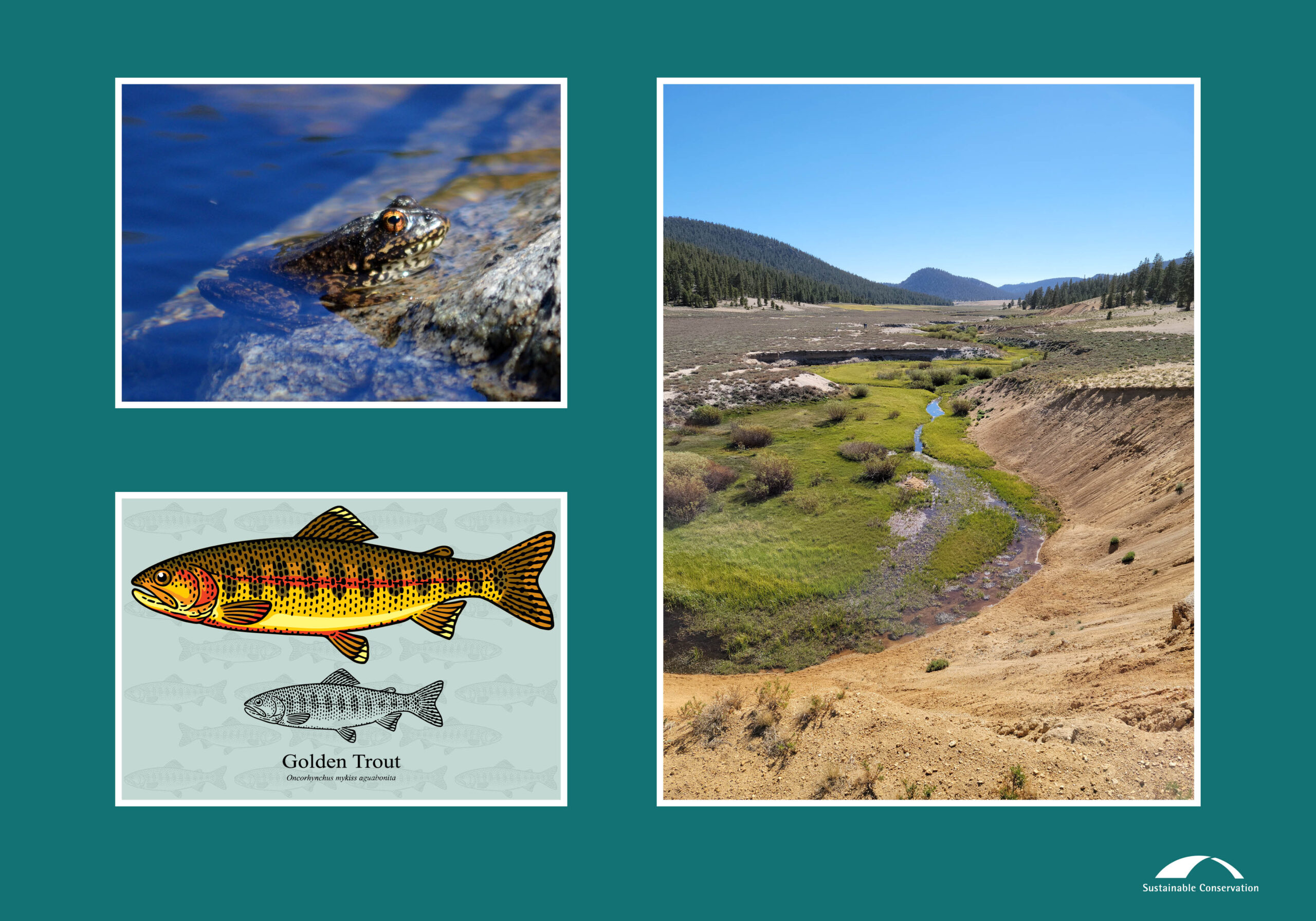
by Eric Epstein
From county-level programs to multi-agency statewide permits, our Accelerating Restoration program’s impact has grown exponentially in three decades. Hundreds of organizations and landowners have used the permits we’ve helped put in place to restore miles of critical riparian habitat, revitalize our rivers, protect iconic species, and reconnect our surface and groundwater resources.
Sustainable Conservation and our partners celebrated dual milestones last year in securing new permitting pathways. We worked with the U.S. Fish and Wildlife Service (USFWS), the U.S. Army Corps of Engineers, the NOAA Restoration Center and the State Water Resources Control Board (SWRCB) to expedite permitting for large and small aquatic habitat restoration projects for all of California.
What does this all mean? More restoration, at scale, more quickly in California. This blog series will highlight recent and future restoration projects that utilized accelerated permitting pathways — both old and brand new!
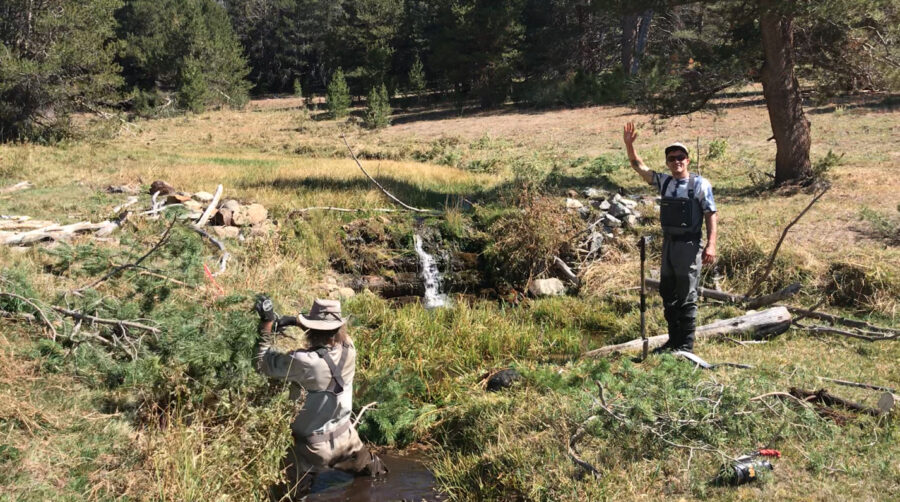
Photo from Jessica Strickland/Trout Unlimited
Kern Plateau Meadow Restoration
What: Process-based mountain meadow and stream habitat restoration
Who: The project is a Trout Unlimited and U.S. Forest Service initiative working in partnership with the Inyo National Forest, California Department of Fish and Wildlife, and other restoration professionals and partner organizations, including Point Blue Conservation Science, Anabranch Solutions, Waterways Consulting, and the Sierra Meadows Partnership
Where: Kern Plateau in the southern Sierra Nevada, Inyo and Tulare counties
Accelerated permitting pathways used: Statewide Restoration General Order (SRGO) and Programmatic Environmental Impact Report (PEIR)
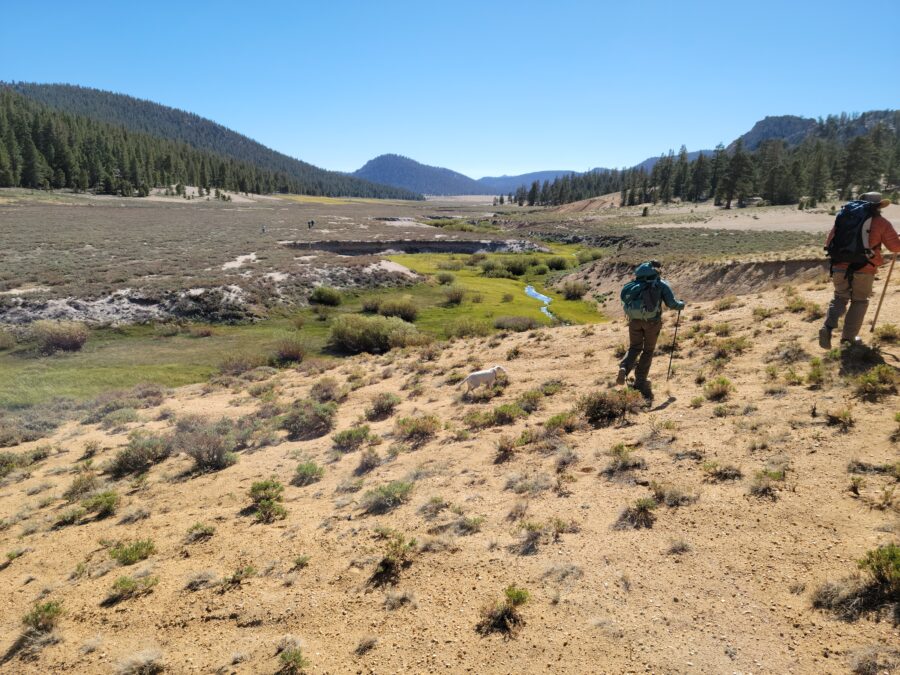
Photo from Jessica Strickland/Trout Unlimited
Kern Plateau, an area of 500,000 acres in the Golden Trout Wilderness, is rife with gentle, rolling meadows and meandering streams that have historically housed a large number of California golden trout. The golden trout — California’s state fish — can only thrive in certain high-elevation (7,500+ feet) waters in the Sierra Nevada mountain range.
According to Trout Unlimited, the interconnected relationship between the high-elevation streams and their adjacent floodplain meadows is essential for the California golden trout’s survival.
U.S. Forest Service lands are multi-use landscapes that have been impacted by a variety of extractive and other land use practices in the past and present. The negative impact of these human practices is the impetus for the project by Trout Unlimited and the U.S. Forest Service to restore 13 degraded headwater stream-meadow complexes in the Golden Trout Wilderness. The project will restore 826 acres of habitat instream and along the banks and will enhance approximately 2,500 acres of wet meadow habitat.
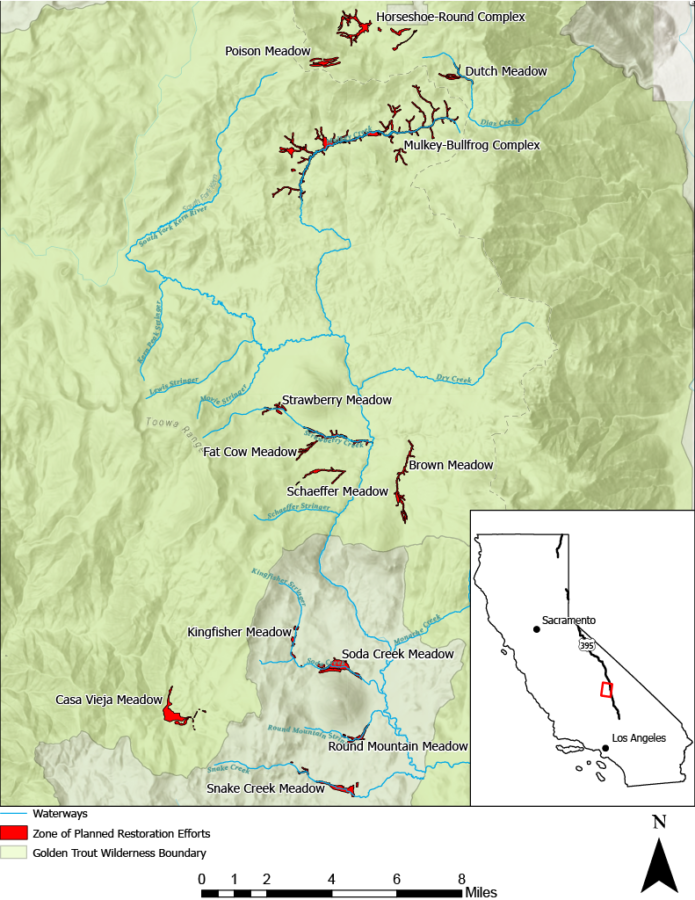
Map from Jessica Strickland/Trout Unlimited
Making Restoration Happen Now – Not Years from Now
The project took advantage of the recently completed SRGO mentioned above. Jessica Strickland, the California Inland Trout Program Director at Trout Unlimited, said that the team intentionally waited for the SRGO to become available for the project. She believes that going through the expedited permitting path laid out by the SRGO was the easiest route for restoration on Kern Plateau.
“This is a complex landscape-level restoration project crossing multiple watersheds and state and federal jurisdictional boundaries, thus we expected a very complicated CEQA and permitting process. The new SRGO process allowed us to bump construction up an entire year and unlocked $3 million in construction funds through the Sierra Meadows Partnership.” — Jessica Strickland, California Inland Trout Program Director, Trout Unlimited
Due to the inaccessibility of the Kern Plateau and local restrictions on using mechanized tools, restoration crews will use low-tech process-based restoration techniques that primarily employ hand tools. This type of restoration work often includes strategically placed timber and simple wooden structures to mimic beaver dams, or beaver dam analogues (BDAs,) and could be subsequently populated and maintained by beavers to slow down water in the stream channels, reconnect degraded streams to their floodplains, and increase water storage.
Healthy Meadows for Water and Species
The Kern Plateau project provides diverse benefits for the environment and for people. Healthy mountain meadows serve as critical “sponges” in the larger California water system, soaking up and holding high volumes of rain and snowmelt to release over time. This sponge effect can help reduce downstream flood risk and water infrastructure stress during winter rains in the winter and spring and summer snowmelt.
Increased floodplain water storage will also make the waterways more habitable for California golden trout and the federally protected mountain yellow-legged frog, a northern California distinct population segment that’s discrete from other populations of the species! According to Trout Unlimited, “by holding cold water on the landscape, healthy meadows act as safe havens for trout against drought, catastrophic wildfire, and rising air temperatures.” The meadow restoration will also provide important habitat for insects – a key food source for many amphibians, birds, and reptiles.
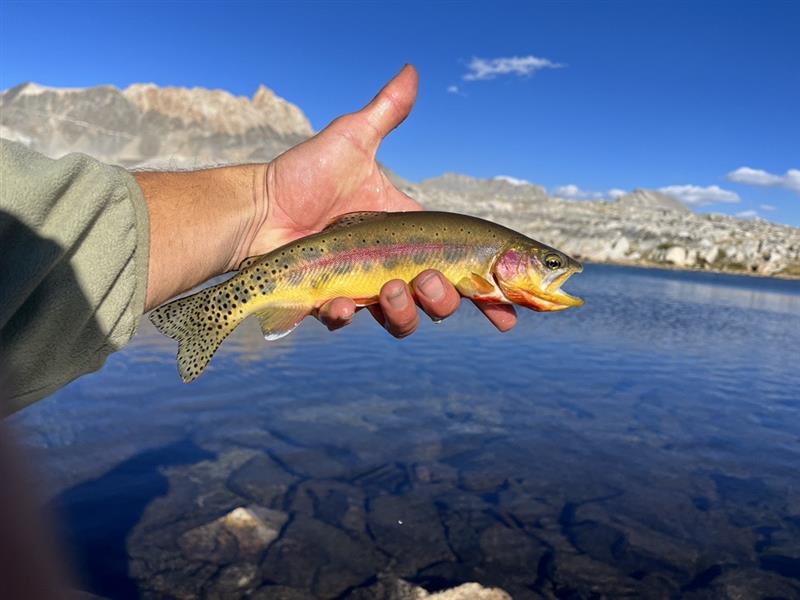
Golden Trout from Humphreys Basin. Photo from Elliot Grant/Sustainable Conservation.
Fire Risk Mitigation and Recreation Opportunities
Meadows with high volumes of water storage can also mitigate forest fire risk by breaking up crowded, fuel-dense forests with wet open spaces. As the devastating effects of wildfires continue to grow year after year, preventative measures are increasingly valuable to the statewide ecosystem and community.
Additionally, reversing the degradation of the stream will ensure a more consistent flow throughout the year, and more plant biomass can increase the meadow’s greenhouse gas sequestration capacity. Improved stream and meadow condition would also improve visitor experience on public lands, potentially creating opportunity for a more robust local business community in the area.
